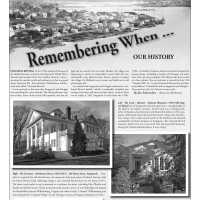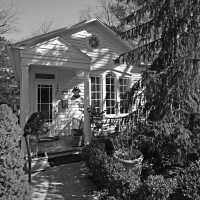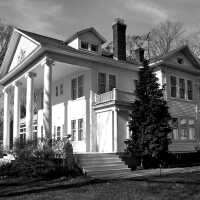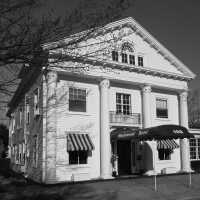Colonial Revival Style
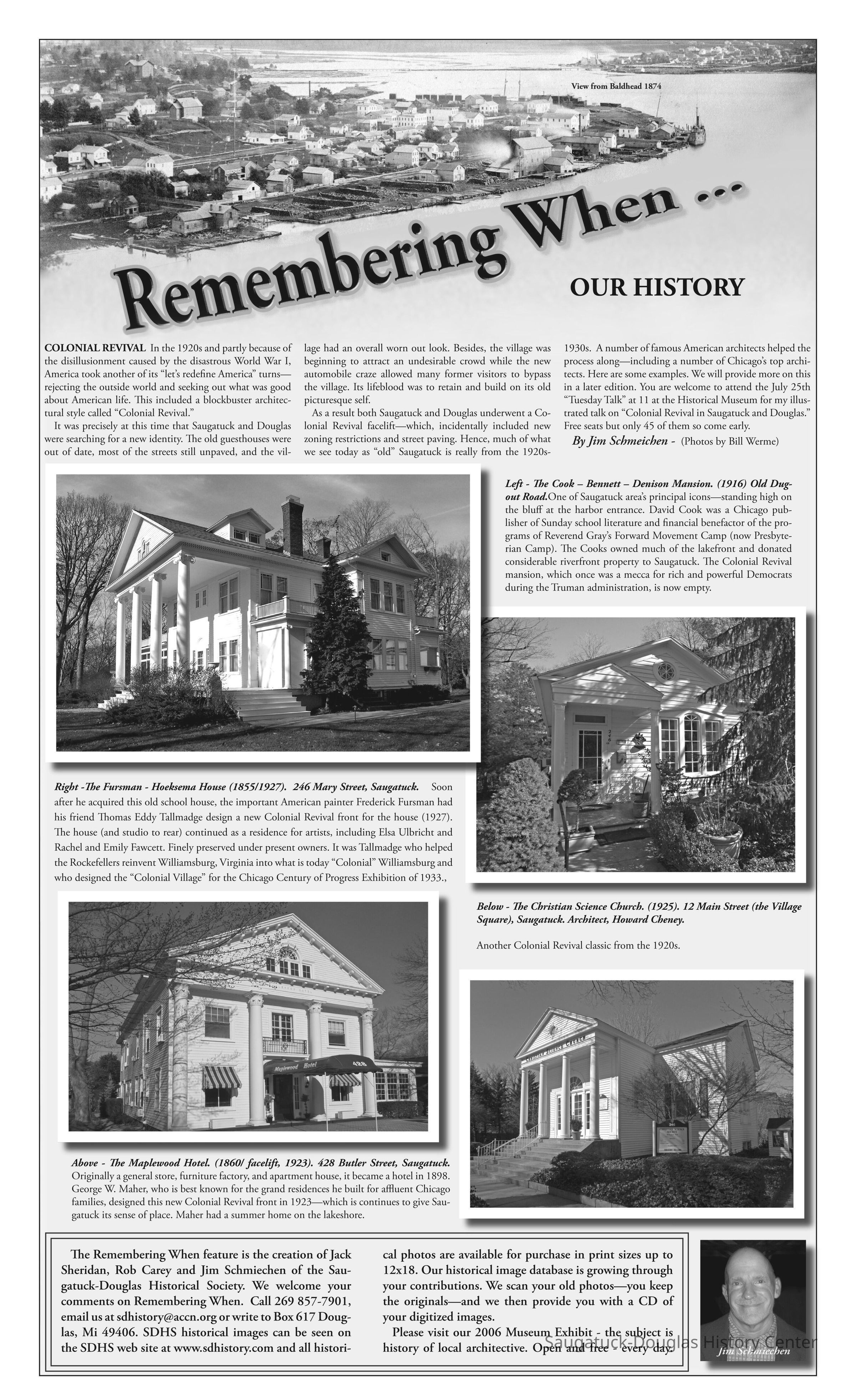
2021.87.76
COLONIAL REVIVAL In the 1920s and partly because of the disillusionment caused by the disastrous World War I, America took another of its “let’s redefine America” turns—rejecting the outside world and seeking out what was good about American life. This included a blockbuster architectural style called “Colonial Revival.” It was precisely at this time that Saugatuck and Douglas were searching for a new identity. The old guesthouses were out of date, most of the streets still unpaved, and the village had an overall worn out look. Besides, the village was beginning to attract an undesirable crowd while the new automobile craze allowed many former visitors to bypass the village. Its lifeblood was to retain and build on its old picturesque self. As a result both Saugatuck and Douglas underwent a Colonial Revival facelift—which, incidentally included new zoning restrictions and street paving. Hence, much of what we see today as “old” Saugatuck is really from the 1920s-1930s. A number of famous American architects helped the process along—including a number of Chicago’s top architects. Here are some examples. We will provide more on this in a later edition. You are welcome to attend the July 25th “Tuesday Talk” at 11 at the Historical Museum for my illustrated talk on “Colonial Revival in Saugatuck and Douglas.” Free seats but only 45 of them so come early. By Jim Schmeichen - (Photos by Bill Werme) Left - The Cook – Bennett – Denison Mansion. (1916) Old Dugout Road.One of Saugatuck area’s principal icons—standing high on the bluff at the harbor entrance. David Cook was a Chicago publisher of Sunday school literature and financial benefactor of the programs of Reverend Gray’s Forward Movement Camp (now Presbyterian Camp). The Cooks owned much of the lakefront and donated considerable riverfront property to Saugatuck. The Colonial Revival mansion, which once was a mecca for rich and powerful Democrats during the Truman administration, is now empty. Right -The Fursman - Hoeksema House (1855/1927). 246 Mary Street, Saugatuck. Soon after he acquired this old school house, the important American painter Frederick Fursman had his friend Thomas Eddy Tallmadge design a new Colonial Revival front for the house (1927). The house (and studio to rear) continued as a residence for artists, including Elsa Ulbricht and Rachel and Emily Fawcett. Finely preserved under present owners. It was Tallmadge who helped the Rockefellers reinvent Williamsburg, Virginia into what is today “Colonial” Williamsburg and who designed the “Colonial Village” for the Chicago Century of Progress Exhibition of 1933., Below - The Christian Science Church. (1925). 12 Main Street (the Village Square), Saugatuck. Architect, Howard Cheney. Another Colonial Revival classic from the 1920s. Above - The Maplewood Hotel. (1860/ facelift, 1923). 428 Butler Street, Saugatuck. Originally a general store, furniture factory, and apartment house, it became a hotel in 1898. George W. Maher, who is best known for the grand residences he built for affluent Chicago families, designed this new Colonial Revival front in 1923—which is continues to give Saugatuck its sense of place. Maher had a summer home on the lakeshore.
Remembering When
Winthers, Sally
2021.87
Sheridan, John "Jack" O. 1938-
Donation
Digital data in CatalogIt
Carey, Rob 1928-2019Sheridan, John "Jack" O. 1938-Schmiechen, James A.Werme, Bill 1949-Cook, David Caleb 1849-1927Fursman, Frederick Frary 1874-1943Tallmadge, Thomas Eddy 1876-1940Ulbricht, Elsa 1885-1980Faucett, Emily Cornelia 1909-1991Maher, George W. 1864-1926Christian Science Church/Barnett Bldg.428 Butler/Maplewood Hotel b.1860/facade 1923246 Mary/Fursman House/Pine Grove School 1855-
Local Observer
01/01/2022
11/18/2023

